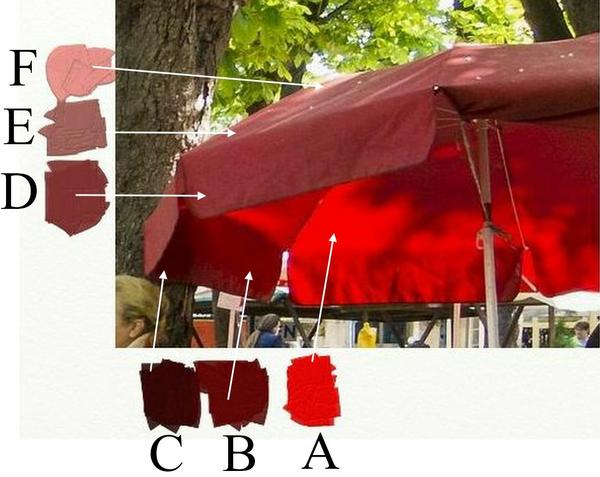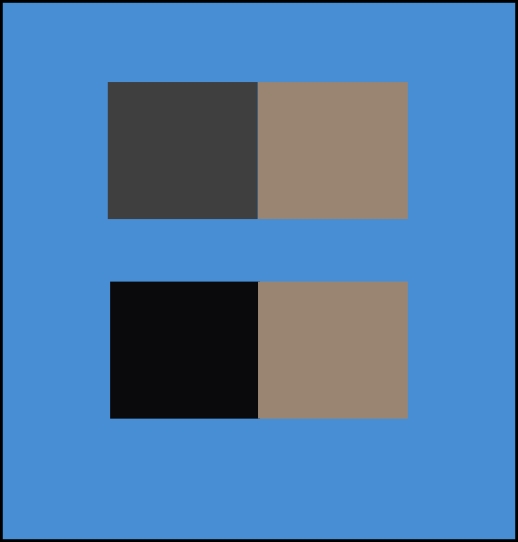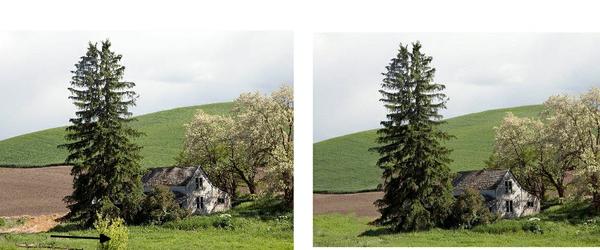Do you pay close attention to what your eyes are seeing? Try this little game:
Looking at the photo below, take note of all the things that are red, then go to the next paragraph below the picture..
Now without looking at the picture, list all the things that are blue. (Shameless disclosure: I lifted this idea from someone else, but I don't remember who.) If our vision is narrowed to one thing we are looking for, we're likely to miss other things. We see what we expect to see and little else.
A new painting idea can cause the same thing to happen. Suppose we decided to do a painting of that red umbrella to the far right.
If we just dove in to paint a red umbrella, something like this could happen.
If it did, it would be because our focus is on "red umbrella." We might have missed those basic shapes we see because we didn't focus on the shapes.
Focusing on the idea of "red", we might have missed those variations in color where very little of the umbrella is actually red, rather several variations of red in light and dark values. Look at the differences among A, B, C, D, E, and F.
We're better off not to focus on red umbrella at all, not even to have any expectations around "red umbrella." When once we find a subject, we're more likely to have success if we forget all about what it is and focus our attention on asking what shapes do we see, what colors to we see, what textures...and so on. We WILL paint what we see, it's just a matter of where we focus.


















